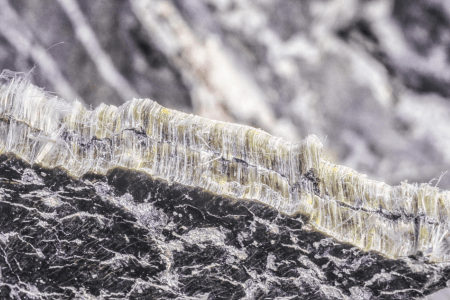Asbestos. The name itself conjures images of industrial settings and hazardous materials. But this naturally occurring mineral can also lurk unseen in our homes, workplaces, and environment. Once popular for its remarkable strength, heat resistance, and fireproofing properties, asbestos is now recognized as a serious health hazard. This article delves into the world of ACM’s, exploring its properties, its historical uses, and the adverse health impact associated with exposure.
What is Asbestos?
Asbestos isn’t a single material but rather a group of six naturally occurring minerals found in rock and soil. These minerals share a common characteristic: they can be broken down into microscopic fibers. These fibers are incredibly thin and durable, and because of their size, they can become airborne and easily inhaled.
There are two main categories of ACMs: serpentine and amphibole. Serpentine asbestos, which includes chrysotile, is the most common type. Amphibole asbestos, on the other hand, is considered more dangerous because its fibers are more brittle and can stay lodged in the lungs for a longer time.
A History of Usefulness and a Legacy of Risk
Asbestos’ unique properties made it a highly desirable material throughout the 20th century. Its fire resistance found application in building materials like insulation, roofing, flooring, and even paint. Its strength made it a valuable component in automotive parts, brake linings, and clutch pads. From shipbuilding to the construction industry, ACM’s seemed like a wonder material.
However, the dangers of ACBM exposure were recognized as early as the 1930s. Studies linked fiberous dust to lung disease in workers heavily exposed to it. Despite these warnings, widespread use of ACM’s continued for decades.
The Dangers of Exposure
The microscopic ACMs fibers pose a significant health risk when inhaled. These fibers can become lodged deep within the lungs, where they can irritate and scar the lung tissue. Over time, this damage can lead to a number of health effects, including:
Asbestosis
This is a chronic lung disease caused by scarring of the lung tissue. Symptoms of asbestosis can include shortness of breath, coughing, chest tightness, and difficulty breathing.
Mesothelioma
This is a rare and aggressive form of cancer that affects the lining of the chest cavity or abdomen. Mesothelioma is almost exclusively caused by asbestos exposure.
Lung Cancer
People who have been exposed to asbestos are at an increased risk of developing lung cancer, especially if they smoke.
When Does Asbestos Pose Danger?
ACMs becomes dangerous when the materials containing it are disturbed or damaged. This can happen during renovation projects, demolition work, or even simply through wear and tear on older buildings. When asbestos-containing materials crumble or break down, they release fibers materials into the air, creating a potential hazard.
It’s important to remember that all types of ACMs fibers are considered dangerous. There is no safe level of exposure. Additionally, the health effects of exposure can take a long time to appear, sometimes decades after the initial exposure. This latency period makes it difficult to connect symptoms to ACM exposure.
Who Is Most at Risk of Exposure?
Anyone who breathes in ACM fibers can be at risk of developing an asbestos-related disease. However, certain groups are at a higher risk due to their level and duration of exposure. These include:
- Construction workers, particularly those involved in the demolition or renovation of older buildings.
- Shipyard workers
- Auto mechanics
- Miners and millers
- Individuals who live in homes containing ACM-containing building materials (ACBM)
How to Protect Yourself From Exposure
The best way to protect yourself from ACM-related diseases is to avoid exposure altogether. If you suspect your home may contain asbestos, it’s crucial to have it inspected by a qualified professional. Do not attempt to remove any fiberous-containing materials yourself. Hire certified abatement contractors who can safely remove the materials and minimize the risk of exposure.
Living with ACM’s: What You Can Do
If you discover ACMs in your home, don’t panic. Asbestos is only hazardous when disturbed. Here are some tips for minimizing your risk:
- Leave ACBM undisturbed. The most important step is to avoid disturbing asbestos-containing materials.
- Maintain good ventilation. Ensure proper air circulation in your home to prevent the accumulation of dust particles.
- Develop a management plan. Consult a qualified professional to develop a plan for managing and maintaining asbestos-containing materials in a safe manner.
Take Necessary Action for Asbestos Testing & Removal
To promote safety from asbestos in your home or workspace, it’s important to engage professionals who can conduct the process in line with Alberta regulations.
The testing process entails collecting samples for lab analysis. Based on the findings, ACM removal follows a systematic set of procedures
At Rawk J Services, our team is comprised of certified professionals. We put customer satisfaction at the forefront, with 24/7 service, whenever you need our help. Get in touch to talk with us about what you’re dealing with in your space.

